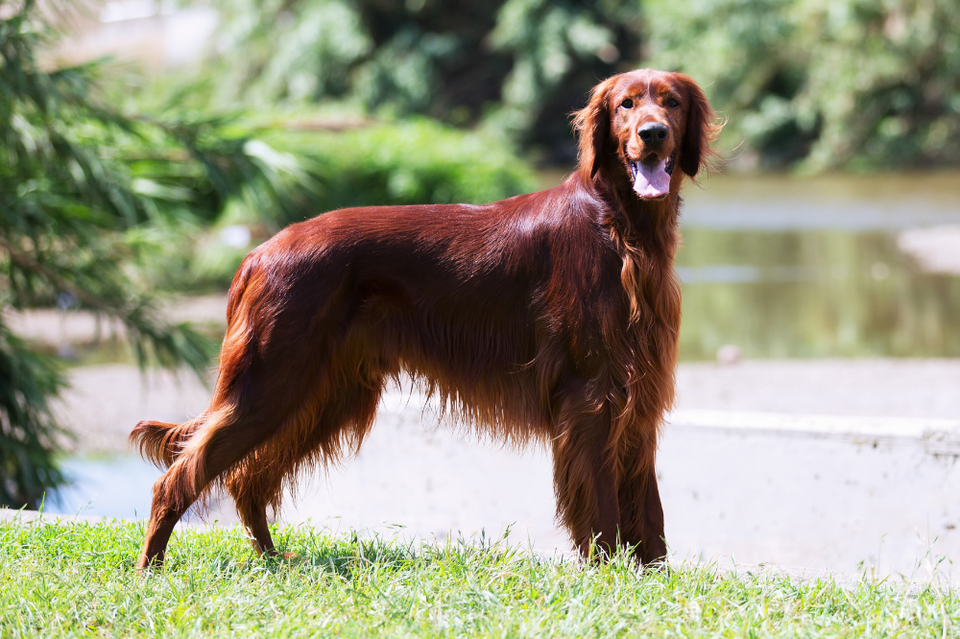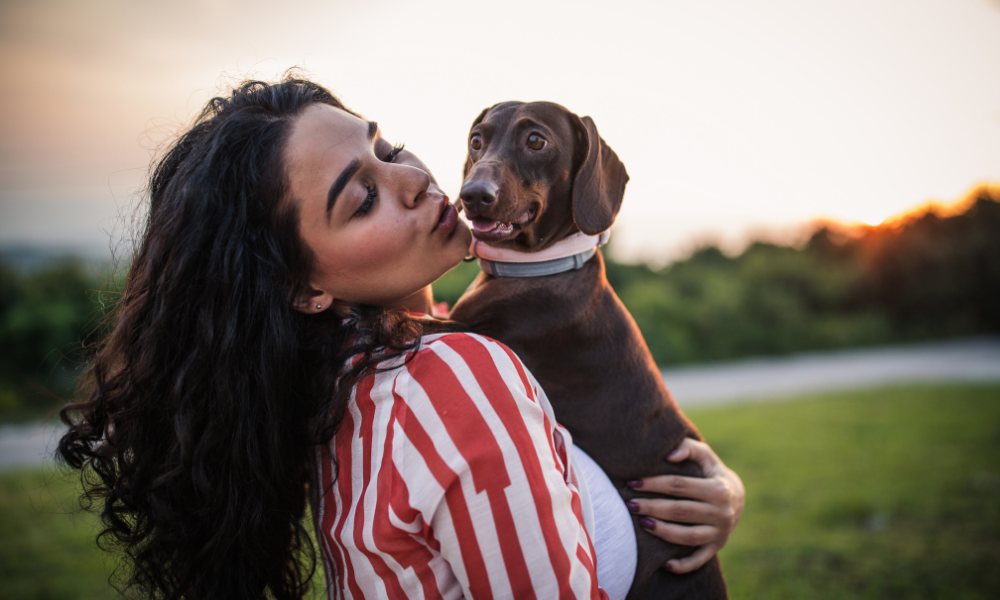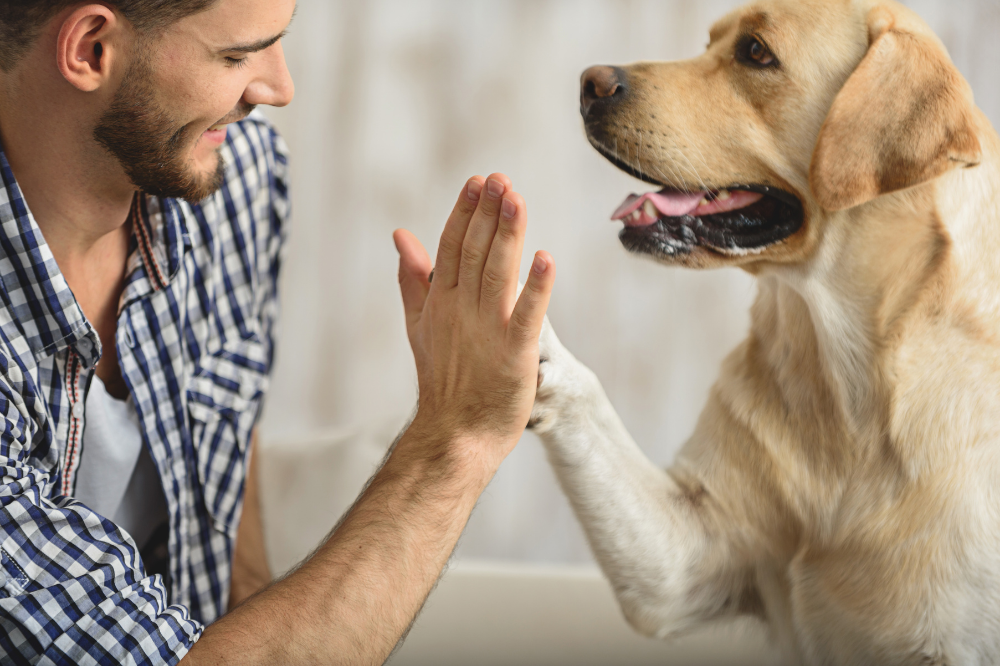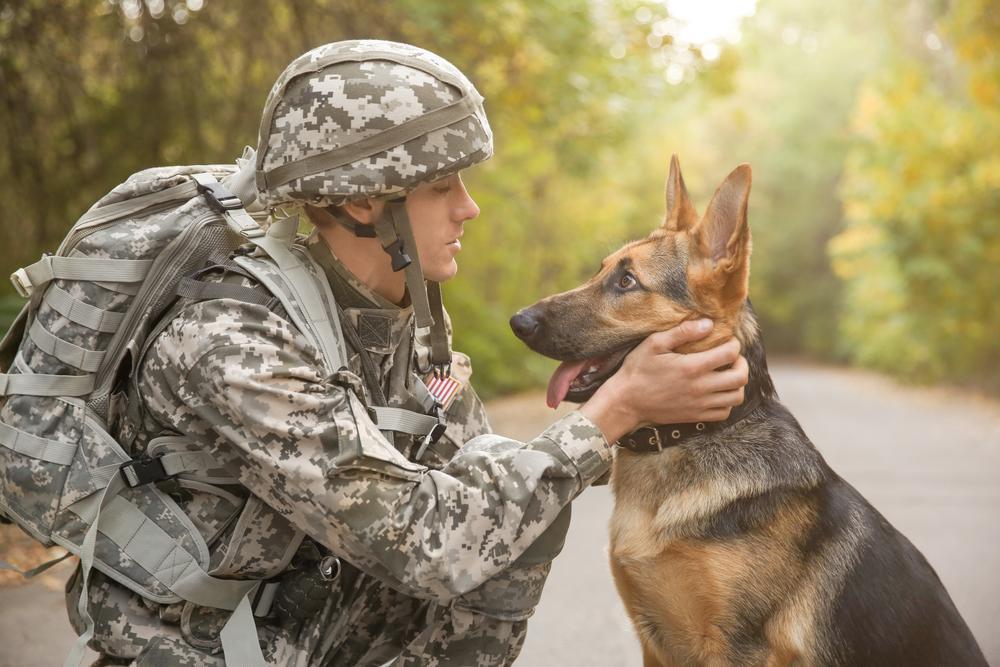
Erin go bark: The 9 dog breeds of Ireland

Although the celebrations may have been more subdued in recent years, St. Patrick’s Day is still a big day in the United States, particularly in the cities with the largest percentage of people of Irish ancestry — New York City, Boston, and Chicago.
Surprisingly, though, Census records show that only just under ten percent of Americans identify as having Irish roots — about 32 million people. However, DNA tells a different story.
According to Ancestry.com, fully two thirds of the 15 million samples in their database have some Irish background, ranging from 5 percent to 100 percent. Since it only takes one second or third great-grandparent to hit the lower figure, it’s no surprise that a lot of people might not know.
When it comes to dog breeds from Ireland, though, they are quite well-known.
Nine dog wonders
There are nine dog breeds native to Ireland, covering a number of dog groups. They break down nicely into a pyramid, actually: two hounds, three birddogs (aka gundogs), and four terriers.
Of course, those particular groups exist all over the place. We have the American foxhound and Afghan hound; the Labrador retriever, German shorthair pointer, and English springer spaniel; and the American Staffordshire terrier, Australian terrier, Bedlington terrier, and Cairn terrier — none of which originated in Ireland.
Each of these groups has a slightly different specialty, but each of them performs a particular job for their people.
Hounds were bred for hunting, either through their incredible sense of smell or their stamina in tracking quarry, or both. One of the most famous breeds is the bloodhound, bane of escaped prisoners (especially in movies) since forever.
Birddogs are named not for their ability to fly, but for their abilities in flushing out waterfowl, retrieving the downed birds, often from water, or both.
Retrievers are bred to run into the water when a bird is brought down and retrieve it — without snacking on it, of course. Meanwhile, Spaniels are bred to find and flush out prey, driving it into the sky.
Finally, there are the terriers, and the clue is in the name of the group, which comes from the Latin word for “earth” or “ground.” That’s what these brave little hunters do, “going to ground” after prey that lives in burrows or dens.
This requires tenacity, cleverness, and a small size. It’s probably also no accident that terriers are among the smartest of breeds. Speaking from experience, two of the three dogs I’ve been the proud parent of so far in my life have been terrier mixes — one about half, and the other (thanks to official DNA testing) one-eighth. Both were little Einsteins.
More than just companions
It’s probably pretty obvious, then, why dogs from these groups became native Irish breeds, whereas others, like the toy group, did not. Ireland has for a long time been a fairly rural country, with basic survival based on farming, hunting, clam-digging, and fishing.
Hence, no need for toy dogs, which were traditionally bred to be the companions and playthings of the non-working group leisure class — which didn’t exist in Ireland. No. If you had a dog in Ireland, it was doing a job which was centered on feeding your family and your community.
So... hunting down prey or catching it; flushing out waterfowl or retrieving successful takedowns; or going after the underground edibles (rabbits and hares) or nuisances (foxes, and badgers.)
In short, without their dogs, the Irish may not have survived the 19th century.

The unsung heroes of Ireland
So, what are these nine breeds? Here we go...
1. Hounds
The Kerry beagle and Irish wolfhound represent, well, the hounds. Sort of. Although the Kerry beagle started out as a scenthound, it’s not technically part of the hound group today. In fact, it’s groupless. Dating back to the 15th century, they originally used their noses and endurance to track large prey, primarily stags, and to lead the human hunters to them.
Nowadays, they are primarily used for hare and drag hunting. The latter has nothing to do with RuPaul and fabulous hunters, by the way. Instead, it involves hounds leading a group of equestrians as the dogs follow a scent trail laid out by humans, who drag the scent source behind themselves, hence the name.
Kerry beagles can make great additions to your household, although they are high energy.
Weighing in at around 100 to 120 lbs for adults (but up to 180 for some males), the Irish wolfhound is one of the larger dog breeds, and ranks as the tallest official AKC breed.
They were originally bred as big-game hunters, the big game in Ireland being primarily wolves, hence the breed name. Yes, an Irish wolfhound was entirely capable of taking down a wolf on its own, mano a mano. Well, pata a pata.
They are fast runners, although are too calm to be guard dogs, at least by temperament. However, the mere sight of one probably scared off many a human interloper back in the day. And that day goes way back — Irish wolfhounds existed at least as far back as the 4th century, when seven of them were gifted to the Roman Consul. At that time, they were used for elk-hunting.
So there you have two Irish hounds at opposite ends of the spectrum: Small and fierce, and giant but gentle. Unless, of course, you get their Irish up.
2. Birddogs
This trio comprises the Irish setter, the Irish red and white setter, and the Irish water spaniel. Surprisingly, the first two are considered different breeds, despite a common name for the former being the Irish red setter.
The Irish water spaniel is the smallest of the three (although the tallest of the spaniels), and also the curliest. You could be forgiven for mistaking it for a brown poodle at first sight. They are alert, inquisitive, and incredible swimmers, as the name implies.
Their coat is waterproof, and they have a high tolerance for the cold waters off the coast of Ireland. The modern breed comes from about the mid-19th century, and by 1875, it had become the third most popular breed in the U.S.
As for the Irish red setter and Irish red and white setter, the former is a bit taller and very fast in the field, also able to find waterfowl by scent. When an Irish red does detect waterfowl, it will indicate it by lying low to the ground, or “setting,” hence the name.
While Irish setters initially came in the red and white combo, breeders focused on the single-color red, which almost led to the extinction of the mixed-color dogs. However, breeders started to work with them as well. As a result, they are now two distinct breeds.
The Irish red and white has a different approach to indicating fowl, and goes into a classic “point,” remaining motionless as it indicates where the waterfowl are. As for the coloration, the red patches on a pearly white coat have a practical use — it makes it easier for the human hunter to spot their dog across an open field.
3. Terriers
The four breeds of terriers native to Ireland are a great demonstration of the large variation in the breed. We have the Glen of Imaal terrier, the soft coated Wheaten terrier, the Kerry blue terrier, and, of course, the Irish terrier.
Native to the area on the east coast of Ireland south of Dublin that gave the breed its name, the Glen of Imaal terrier was originally bred to hunt small prey, like rats, foxes, and badgers.
Legendarily, they may also have worked in the kitchen as turnspit dogs, which is about what it sounds like. They were trained to run in wheels that rotated a spit over the fire to evenly cook meat.
They don’t tend to bark a lot, most likely because they had to work in silence in order to catch their prey off-guard. They are also extremely strong for their size. After all, they did bring down badgers, which are bigger than they are. They tend to love children, but are not fond of other dogs.
The soft coated Wheaten terrier was originally Ireland’s “poor-man’s Wolfhound,” because Irish peasants were not legally allowed to have hounds, beagles, or spaniels.
As a consequence, they used the breed to perform every job on the farm — herding, hunting vermin, guarding the family and property, and birddogging. The breed retains its versatility to this day.
Although it may be an apocryphal tale, legend has it that the Kerry blue terrier is a descendant breed from the Wheaten. This happened because, after the Spanish Armada sank off the coast of Ireland, dogs from the Spanish fleet swam ashore and wound up mating with the locals.
Those dogs were “blue” (actually varying shades of gray to blue-gray), leading eventually to a new breed. Like the Wheaten terrier, Kerry blues were versatile farm dogs, and the breed eventually became a mascot for local patriots during the struggle for Irish independence in the early 20th century.
Finally, we come to the Irish terrier, the small but mighty Emerald Isle native that requires no other descriptive words. As ratters, they are tenacious, but are also too intelligent to be stuck in one role, so like their fellow terriers, often did all the jobs on the farm.
They do make great pets, but keep in mind that they are high-energy and not necessarily fond of other dogs in the house. If you have room for them to run and don’t work long hours, they could be an ideal match.
As you celebrate (or at least note the passing of) St. Patrick’s Day, keep in mind these nine wonderful breeds that have enriched our lives, and the enormous diversity they show in size, coat, temperament, and abilities.
One thing Irish dogs all seem to have in common is high energy that makes them hard workers, so if you have one of these breeds at home, you’re going to need a very comfy place for them to sleep after they wear themselves out taking care of you and your family.
But they’re well worth it, and when it comes to fur babies, there are some excellent choices on this list. Éireann go brách!
Share this article
written by


